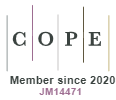BUGRURAL: Applying the principles of Human-Centered Design (HCD) in the development of a solution for pest management in agriculture
DOI:
https://doi.org/10.5585/2025.27579Keywords:
Innovation, Human-Centered Design, Pest monitoring, Precision agricultureAbstract
Insect pests pose a significant challenge to agriculture, leading to substantial losses in global production. To address these economic and environmental impacts, innovative solutions are crucial, moving beyond the continuous use of pesticides, which has detrimental effects on health and the environment. Precision agriculture, with its advanced tools, offers a promising approach for effective pest monitoring e control. However, traditional manual monitoring is often inefficient and prone to errors. This study explores the application of Human-Centered Design (HCD) as an innovative methodology to develop more effective, user-centered solutions for pest monitoring. HCD, which involves the phases of inspiration, ideation, and implementation, is particularly suited for creating solutions that meet users' real needs and are both feasible and desirable. The proposed solution is BugRural, a software prototype aimed at enhancing the accuracy of pest monitoring using accessible and intuitive technologies. This project represents a digital social innovation intended to positively impact the agricultural sector, aligning with the United Nations' Sustainable Development Goals (SDGs): SDG 2 (food security and sustainable agriculture), SDG 3 (health and well-being), SDG 9 (sustainable infrastructure and innovation), and SDG 12 (sustainable consumption and production patterns).
Downloads
References
Anastacio, M. R., Cruz Filho, P. R., & Marins, J. (2018). Social e Inovação Social no Contexto Brasileiro. Curitiba: PUCPRESS Editora Universitária Champagnat.
Baregheh, A., Rowley, J., & Sambrook, S. (2009). Towards a multidisciplinary definition of innovation. Management decision, 47(8), 1323-1339. https://doi.org/10.1108/00251740910984578
Bria, F., Gascó, M., Baeck, P., Halpin, H., Almirall, E., & Kresin, F. (2015). Growing a Digital Social Innovation System for Europe. DSI Final Report.
Brown, T. (2018). Design Thinking: Uma metodologia poderosa para decretar o fim das velhas ideias. Alta Books Editora.
Costa, A. M. de, Silva, H. C. J. de, Lima, T. B. de, Silva Neto, V. A. de, & Souza, R. A. C. de. (2021). Aplicação do Design Centrado em Humano para o desenvolvimento de uma solução para dar transparência nos gastos em obras públicas. Revista dos Mestrados Profissionais, 10(2), 205. https://doi.org/10.51359/2317-0115.2021.252729
Emerson, J. (2003). The blended value proposition: Integrating social and ¬nancial returns. California Management Review, 45(4): 35–51. https://doi.org/10.2307/41166187
Giacomin, J. (2012). What is human centred design? In X Congresso brasileiro de pesquisa em design (pp. 148–161). EDUFMA.
IDEO. (2015). The Field Guide to Human-Centered Design. Design Kit. https://www.designkit.org/resources/1.html
Karar, M. E., Alsunaydi, F., Albusaymi, S., & Alotaibi, S. (2021). A new mobile application of agricultural pests recognition using deep learning in cloud computing system. Alexandria Engineering Journal, 60(5), 4423–4432. https://doi.org/10.1016/j.aej.2021.03.009
Lins, E. A. (2018). Uma metodologia de contagem e classificação de afídeos utilizando visão computacional [Dissertação de Mestrado, Pós-Graduação em Computação Aplicada, Universidade de Passo Fundo]. http://tede.upf.br/jspui/handle/tede/1505
Liedtka, J., Salzman, R., & Azer, D. (2017). Design thinking for the greater good: Innovation in the social sector. Columbia University Press.
Moulaert, F., Martinelli, F., González, S., & Swyngedouw, E. (2007). Introduction: Social Innovation and Governance in European Cities. European Urban and Regional Studies, 14(3), 195–209. https://doi.org/10.1177/0969776407077737
Murray, R., Mulgan, G., & Caulier-Grice, J. (2008). How to Innovate: The Tools for Social Innovation. London, The Young Foundation. https://yftest.bronzesilvergold.co.uk/our-work/publications/how-to-innovate-the-tools-for-social-innovation-2/
Mulgan, G. (2012). Social innovation theories: Can theory catch up with practice?. In Franz, H. W., Hochgerner, J., Howaldt, J. (Eds.), Challenge social innovation (pp. 19-42). Springer, Berlin, Heidelberg. https://doi.org/10.1007/978-3-642-32879-4_2
Oliveira, K. K. S., Silva Ferreira, A., Santana, J. R., Bandeira Teixeira, V., & Cavalcante Souza, R. A. (2021). Plataforma Eco+: habilitando o comportamento ecossustentável das pessoas. Gestão org, 18(2), 148. https://doi.org/10.51359/1679-1827.2020.249165
ONU. Organização da Nações Unidas. (2015). Transformando nosso mundo: A agenda 2030 para o desenvolvimento sustentável. https://nacoesunidas.org/pos2015/agenda2030/
Phills Jr., J. A., Deiglmeier, K., & Miller, D. T. (2008). Rediscovering Social Innovation. Stanford Social Innovation Review, 6(4), 34–43. https://doi.org/10.48558/GBJY-GJ47
Ribeiro, G. C., Oliveira, R. F. F. de, Alencar, G. A., & Souza, R. A. C. de. (2019). Desenvolvimento de um aplicativo de alerta de alagamento utilizando os métodos do toolkit HCD. Boletim do Tempo Presente, 1(12). https://periodicos.ufs.br/tempopresente/article/view/11129
Santos, J. F. de, & Souza, R. A. C. de. (2019). Processo de design orientado à inovação social. Revista Brasileira de Computação Aplicada, 11(3), 110–121. https://doi.org/10.5335/rbca.v11i3.9007
Teixeira, A. C. C. (2022). Automatic insect count in trap images using deep learning [Dissertação, Mestrado em Engenharia Electrotécnica e de Computadores, Universidade de Tras-os-Montes e Alto Douro]. http://hdl.handle.net/10348/11437
Teixeira, F. (2014). Utilização de Pesticidas Agrícolas. ACT. https://pagina.arbcas.pt/images/Fitofarmaceuticos/Guia_Pratico_Utilizacao_Pesticidas_Agricolas.pdf
van der Have, R. P., & Rubalcaba, L. (2016). Social innovation research: An emerging area of innovation studies? Research Policy, 45(9), 1923–1935. https://doi.org/10.1016/j.respol.2016.06.010
Viñals, C. R., & Rodríguez, C. P. (2013). Social Innovation: New Forms of Organisation in Knowledge–Based Societies. Routledge/Lisbon, Civic Forum Studies in Innovation, Taylor & Francis. https://doi.org/10.4324/9780203082874
Downloads
Published
How to Cite
Issue
Section
License
Copyright (c) 2025 José Ferreira Guedes Filho, Ricardo André Cavalcante de Souza

This work is licensed under a Creative Commons Attribution-NonCommercial-ShareAlike 4.0 International License.
- Abstract 66
- pdf (Português (Brasil)) 60






